 What does rising interest rates mean for small and mid-sized businesses? To rein in inflation, which is at its highest point in 40 years, the Bank of Canada recently raised its benchmark interest rate to 2.5%, a full percentage increase. This is the largest one-time increase in its rate since 1998, and the fourth increase since March of 2022.
What does rising interest rates mean for small and mid-sized businesses? To rein in inflation, which is at its highest point in 40 years, the Bank of Canada recently raised its benchmark interest rate to 2.5%, a full percentage increase. This is the largest one-time increase in its rate since 1998, and the fourth increase since March of 2022.
Based on this increase, two banks – Royal Bank and TD Bank – raised their prime lending rates from 3.7% to 4.7%. Keep in mind that the prime rate is the floor of what commercial banks will charge their most creditworthy customers, typically large corporations. Nearly everyone else pays prime plus a percentage that is based on the type of loan, its length, the credit rating of the person or business borrowing, and other factors.
With more rate increases expected if inflation doesn’t start to ebb, it makes sense to take a look at how these rising interest rates can affect small and mid-size businesses and what they can do to reduce its impacts.
Impacts of Higher Interest Rates on Small and Mid-Sized Businesses
Consumers will decrease spending
Inflation and higher interest rates impact us all, and many people are looking for ways to cut their expenses right now. With more disposable income going to necessities – housing, utilities, food, gasoline – this leaves less money to spend on entertainment, travel, eating out, and other things we enjoy but can live without. Depending on the industry your business is in, this decrease in demand can be quite a hit to your cash flow.
Loans will be more difficult to get and repay
Many businesses live and die by their lines of credit and short-term loans. The cost of borrowing with our current interest rates is much higher and sometimes prohibitive. This is particularly true for companies that were forced to take out adjustable-rate loans to survive the pandemic and are now faced with much larger payments than they expected. Additionally, borrowers can expect to face greater scrutiny when applying for a loan since the chance of default is higher during inflationary times.
Expansion may be hindered
If sales decrease, cashflow is negatively impacted. As materials cost rise, the cost of doing business increases. Businesses caught in this pinch may have to put off expansion plans, such as building a new plant or adding a new service line. And unfortunately, that impacts hiring as well, which further exacerbates the overall situation and reduces the money consumers have to spend.
It is harder to keep cash on hand
Saving for a rainy day applies to businesses as much or more than consumers. Businesses should always have some accessible cash available in case something unexpected happens. But when you are selling less of your products or services, and paying more for the materials to make them, or people to deliver them, this becomes harder to do.
Hiring and retaining your best people can be difficult
Everyone feels the impact of inflation and higher interest rates, and that includes your employees. When they need more money to meet basic needs, let alone splurge here and there, they are more likely to demand a raise. Additionally, if a better opportunity comes along, they are more likely to leave for greener pastures. To remain competitive and get the best team possible, you may have to increase what you pay current employees or offer a replacement hire.
How Should Small and Mid-Sized Businesses Respond to Higher Interest Rates
Review your business plan
Now is a good time to review your business plan and determine if some adjustments need to be made based on the current economic environment. Take a look at your profit margins on each product or service you sell and consider decreasing those with less profitability, if possible. By selling more high-margin goods or services, your cash flow can remain more steady.
Examine your loans
Do you have any adjustable-rate loans or expensive lines of credit? With interest rates predicted to continue rising, money is probably cheaper now than it will be later this year. Consider securing a fixed rate loan to replace any variable rate ones, and also consolidate where you can to potentially qualify for a lower overall rate.
Raise your prices
This isn’t an option for every business, but it makes sense for many. If your inputs are more expensive, it may be time to charge more for what you do. In many cases, small, incremental increases are easier for your customers to bear than larger wholesale bumps. Look at the impact a price increase will have on your clients and weigh the pros and cons of different price escalations.
Review fixed costs
While these are more difficult to cut, there are often areas where even your fixed expenses can be reduced. For example, if you work from an office, would a hybrid model where employees work 2-3 days at home each week allow you to reduce your office space? This would save on rent as well as utilities.
If you are concerned about your ability to continue to operate, or generate a profit, during this time, we are happy to take a look at your specific situation and make some recommendations. Simply reach out to Kirk Linardakis at klinardakis@rsw.ca to set up an appointment.
